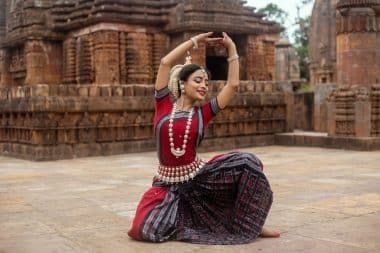Bhubaneswar is the capital and also the largest city of the state of Odisha, which is located in eastern India. It is considered “the city of temples” because it has around 35 old and hundreds of new Hindu temples, most of which are dedicated to the Hindu god Shiva. The population is about 850,000 and consists of about 95% Hindus, 3% Muslims and the rest Christians, Buddhists, Jains and Sikhs. As is generally the case in India , the male population is 10% more strongly represented here. The regional languages are Odia, English and Hindi.
Bhubaneswar is located on the west bank of the Mahanadi River, which meanders through eastern India over a length of almost 850 kilometers. With a size of 135 km², the city of temples measures less than a fifth of Berlin or half of Vienna. The climate of the city is, as usual for India, very warm. Even in the winter months from November to February, the maximum daily temperatures are around 30°C.
Bhubaneswar has its finger on the pulse of time
After 1990, a lot of time was invested in the modernization of the city and a large number of small and medium-sized companies have settled here. In 2014, the city was even ranked as the best business location in India. Bhubaneswar Airport is the only one in the region and was named the best airport of India in 2013. The main railway station is located on the important Haora and Kolkata to Chennai route and thus has connections to Mumbai, Delhi and Hyderabad. Bhubaneswar is also strong in the field of education and can boast three universities, including Utkal University. The latter was founded in 1943, making it the oldest university in Odisha.
A city full of sights
Bhubaneswar offers something for everyone. Whether you are interested in culture, like hiking or just want to unwind! Cultural highlights include the Konark Sun Temple and the sandstone Rajarani Temple, built in the 12th century. Likewise, the Brahmeshwar Temple, the Mukteshwar Temple and the Lingaraj Temple, which is also known as the largest temple of Bhubaneswar, cannot be missed. All of them were 9. and Built in the 10th century, they are a precious treasure of Indian history, both architecturally and mythologically. Typical for most temples is the steeply rising tower structure and the division into a sanctum area with a cult image and a assembly hall in front of it.
In addition to numerous temples, the Odisha State Museum is also worth seeing. It is now one of the most important museums in all of India. Here you can see unique sculptures from all parts of the country, as well as tablets and coins, but also specimens of extinct and endangered animals and handicrafts such as musical instruments and textiles. Since 2018, there has also been the Odisha Crafts Museum, which, spread over eight rooms, is dedicated to different types of craftsmanship. The special thing here is that the buildings were built in the style of traditional huts. The walls are decorated with paintings and clay figures sit on the roofs.
Always up for a trip

The Dhauli Giri Hills are particularly suitable for an excursion. They are known for a rock edict of Emperor Ashoka that is over 2000 years old, which is now protected with a building made largely of glass. Only a few meters above you will find a rocky dome from which the front part of an elephant has been carved out. It is believed that this sculpture is one of the oldest surviving sculptures in all of India. Another absolute highlight is the Shanti Stupa, which was built in 1972 and is lined with wide staircases and houses impressive statues.
Another attraction is certainly the Udayagiri and Chandagiri caves. They are among the oldest cave monasteries in India and are located in a rocky terrain just outside Bhubaneswar. However, they are very easy to reach by taxi. The entire complex comprises about 33 caves and, due to the naming of rulers in the form of inscriptions, can be traced back to the 2. and 3rd century BC.
With a short bus ride you can also reach the Chausath Yogini Temple. This testifies to a matriarchal cult of the gods and shows more or less well-preserved statues of 60 female deities.
The palate also needs a vacation once in a while
Not only the countless temples, but also the unique dishes make the holiday in Bhubaneswar unforgettable. Let’s start the palate journey with Dalma, a simple but very tasty lentil dish. It continues with Chungdi-Malai, so that even non-vegetarians get their money’s worth. The shrimp curry impresses with a successful mixture of curry, coconut milk, ginger, cinnamon and red chili powder. In addition to tasty curries, numerous desserts are also a speciality around Bhubaneswar. Chhena poda is similar to a cheesecake and consists of semolina, raisins, sugar, crumbled paneer, almonds and cashew nuts. Rasabli is also a must-try. The small donut-shaped tikkis, made with cottage cheese, flour, semolina and sugar, and then fried until golden brown and marinated in thickened milk. A real treat for the palate!


